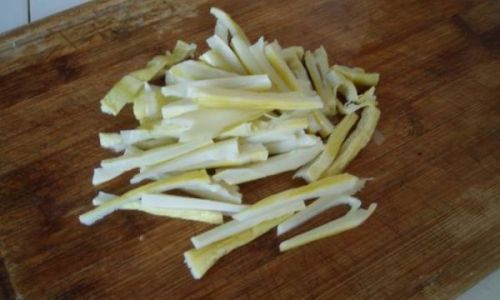Pomegranates, with their jewel-like arils and sweet-tart flavor, are a beloved fruit worldwide. However, once peeled, these delicate seeds can quickly lose their vibrancy and texture if not stored properly. Whether you’ve harvested a bumper crop, scored a deal at the market, or simply want to meal-prep this nutrient-packed snack, mastering the art of preserving peeled pomegranate arils is essential. This guide explores science-backed methods, practical tips, and creative solutions to extend the freshness of your pomegranate arils while retaining their crisp texture and vivid hue.
Understanding Pomegranate Arils: Why Freshness Matters
Pomegranate arils are not only visually striking but also nutritional powerhouses. Rich in antioxidants, vitamin C, fiber, and punicic acid (a polyunsaturated fatty acid), they offer health benefits ranging from heart protection to anti-inflammatory effects. However, their high water content (about 78%) and delicate cell structure make them prone to spoilage. Enzymatic browning, microbial growth, and moisture loss are the primary culprits behind degraded quality. Proper storage slows these processes, ensuring your arils remain as delicious and nutritious as when first peeled.

Pre-Storage Preparation: The Foundation of Freshness
Before diving into storage methods, proper preparation is non-negotiable:
- Gentle Extraction: Use a spoon to tap the skin of a halved pomegranate, releasing arils into a bowl of cold water. This minimizes bruising and separates the seeds from the bitter pith.
- Dry Thoroughly: Pat arils dry with a clean kitchen towel or paper towels. Excess moisture accelerates spoilage.
- Sort Carefully: Remove any damaged, discolored, or overly soft arils, as they spoil faster and may contaminate the rest.
Method 1: Refrigeration for Short-Term Use (3–5 Days)
Refrigeration is ideal for preserving arils intended for immediate consumption. Follow these steps:
- Airtight Containers: Transfer dry arils to a glass or BPA-free plastic container with a tight-fitting lid. Avoid overcrowding to prevent crushing.
- Paper Towel Layer: Place a sheet of absorbent paper towel at the bottom to absorb excess moisture. Replace daily if condensation forms.
- Temperature Control: Store at 0–4°C (32–39°F). Fluctuations in temperature can cause condensation, leading to sogginess.
- Shelf Life: Arils will last 3–5 days. Check daily for signs of mold or off-odors.
Pro Tip: For quick snacking, portion arils into single-serving containers. This reduces exposure to air each time you open the main storage unit.
Method 2: Freezing for Long-Term Storage (Up to 12 Months)
Freezing halts enzymatic activity and microbial growth, making it the gold standard for long-term preservation. Here’s how:
-
Pre-Freeze Tray Method:
- Spread arils in a single layer on a baking sheet lined with parchment paper.
- Freeze for 2–3 hours until solid.
- Transfer to airtight freezer bags or containers, removing as much air as possible.
-
Syrup Pack Method (for culinary uses):
- Mix 1 cup arils with ½ cup simple syrup (equal parts sugar and water, heated until dissolved).
- Cool completely before freezing in jars, leaving 1-inch headspace.
-
Dry Pack Method:
- Toss arils with 1 tsp lemon juice per cup to prevent browning.
- Freeze in portions using vacuum-sealed bags or silicone trays.
Thawing Tips:

- Refrigerate overnight for salads or garnishes.
- Use frozen arils directly in smoothies or sorbets for a refreshing slushy texture.
Method 3: Vacuum Sealing for Zero Oxygen Exposure
Vacuum sealing removes air, slowing oxidation and microbial activity. Invest in a vacuum sealer for best results:
- Process:
- Fill vacuum-seal bags with arils, leaving 2 inches of space.
- Seal at the highest setting to crush any air pockets.
- Store in the refrigerator (up to 2 weeks) or freezer (up to 18 months).
Note: Avoid overfilling bags, as expanding ice crystals during freezing may rupture the seal.
Method 4: Acidulated Water Bath (For Immediate Use)
A quick dip in acidic liquid can delay browning for 1–2 days:
- Solution: Mix 1 cup water with 1 tbsp lemon juice or ascorbic acid powder.
- Process:
- Soak arils for 2 minutes.
- Drain and pat dry.
- Store in the refrigerator in a covered container.
Limitation: This method alters flavor slightly and is best for recipes where acidity complements the dish (e.g., salads, cocktails).
Method 5: Dehydration for Crunchy Snacks
Transform arils into crispy chips with a dehydrator or oven:
-
Dehydrator:
- Spread arils on trays in a single layer.
- Dry at 52°C (125°F) for 10–12 hours until brittle.
-
Oven:
Bake at the lowest setting (50–70°C / 120–160°F) for 6–8 hours, propping the door open with a wooden spoon to release moisture.

Store dried arils in airtight jars away from light for up to 6 months.
Method 6: Fermentation (For Advanced Users)
Lacto-fermentation preserves arils while adding probiotic benefits:
- Brine: Dissolve 1 tbsp sea salt in 2 cups filtered water.
- Process:
- Pack arils into a sterilized jar, leaving 1-inch headspace.
- Pour brine over arils, ensuring they’re submerged.
- Weigh down with a fermentation weight or cabbage leaf.
- Seal with an airlock lid and ferment at room temperature (18–24°C / 65–75°F) for 3–5 days.
- Transfer to the refrigerator once bubbles cease.
Fermented arils last 3–4 weeks and pair well with cheese plates or grain bowls.
Common Mistakes to Avoid
- Storing at Room Temperature: Pomegranate arils are perishable; never leave them uncovered at room temp for >2 hours.
- Using Damp Containers: Even slight moisture promotes mold growth.
- Overfilling Bags/Containers: Restricts airflow and increases crush risk.
- Ignoring Freezer Burn: Label containers with dates and use oldest stock first.
When to Discard Arils
Trust your senses:
- Sight: Mold (fuzzy growth), shriveled texture, or excessive juice leakage.
- Smell: Foul, fermented, or sulfuric odor.
- Taste: Bitter, metallic, or overly soft arils.
Creative Ways to Use Preserved Arils
- Frozen: Blend into smoothies, layer in granita, or garnish cocktails.
- Refrigerated: Toss into salads, yogurt bowls, or rice dishes.
- Dried: Crumble over oatmeal or mix into trail mix.
- Fermented: Serve with charcuterie or blend into vinaigrettes.
Conclusion: Enjoy Pomegranates Year-Round
With the right techniques, you can savor the taste of fresh pomegranate arils long after harvest season. Whether you opt for refrigeration, freezing, or fermentation, the key lies in minimizing air exposure, controlling moisture, and adhering to strict hygiene. Experiment with these methods to find what suits your lifestyle, and never let a single aril go to waste. From vibrant salads to probiotic-rich snacks, preserved pomegranate arils offer endless culinary possibilities—all while delivering a burst of antioxidants with every bite.






0 comments